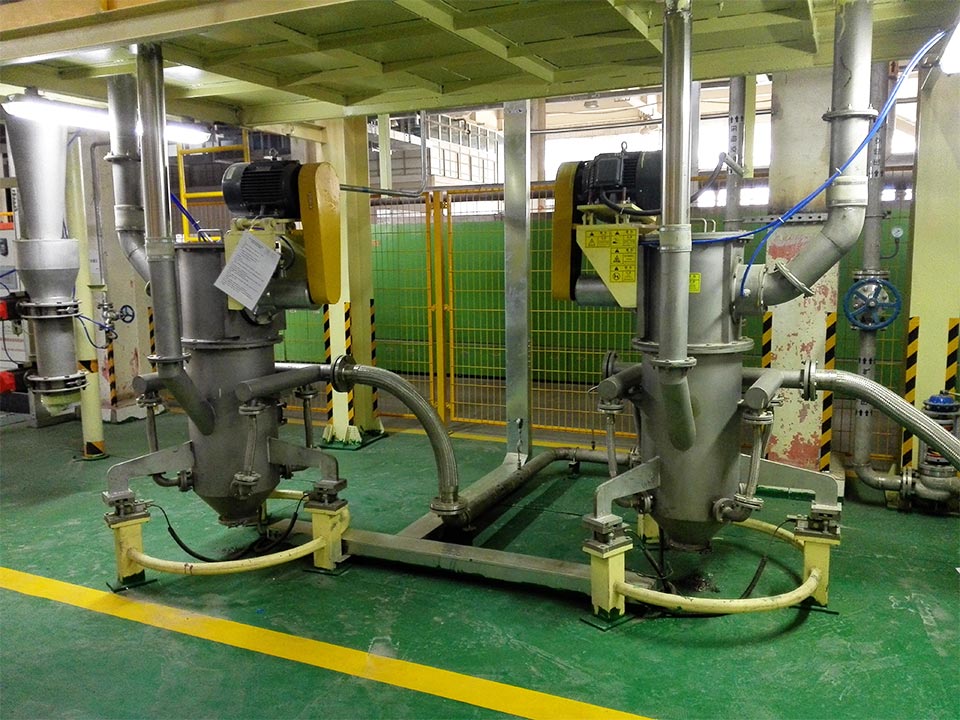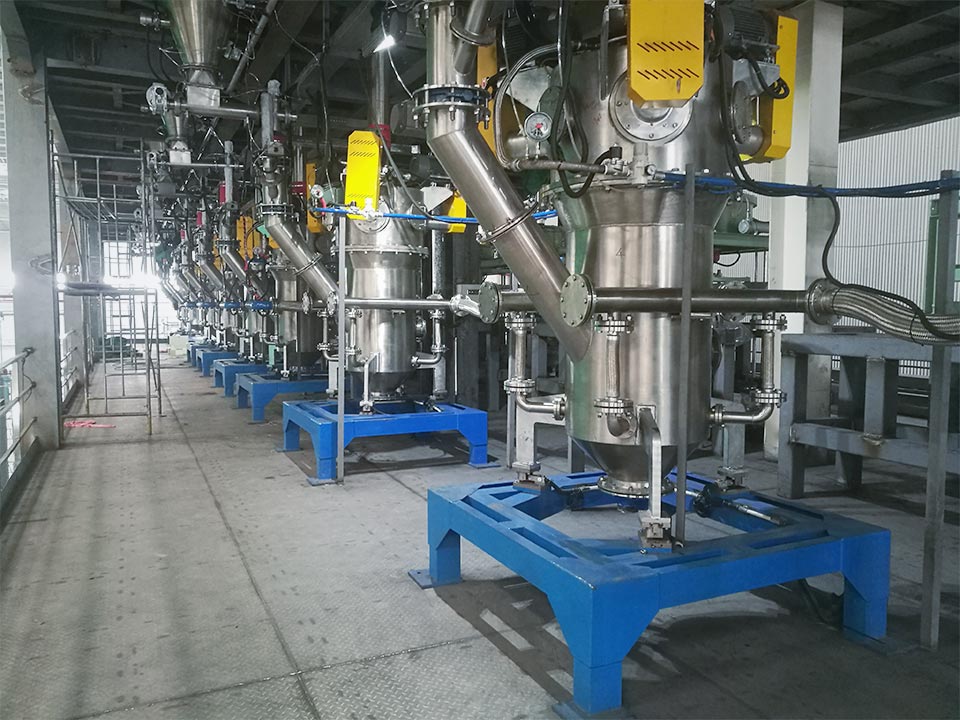What are the factors that affect the output and quality of the ball mill?
The beneficiation stage is mainly divided into three stages: pre-selection, separation and post-selection. Grinding is in the pre-selection stage. Therefore, the output of the ball mill has a certain degree of influence on the mineral separation effect, and even the recovery rate and concentrate grade. Therefore, how to ensure the output of the ball mill has become a topic of concern, so what are the reasons that affect the output of the ball mill?

- Raw material size
The particle size of the raw material affects the output and quality of the ball mill. If the particle size is small, the output and quality of the ball mill will be high, and the power consumption will be low; if the particle size is large, the output and quality of the mill will be low, and the power consumption will be high.
- Material ease of grinding
The grindability of the material refers to the degree of difficulty of the material in the grinding process. According to the national standard, the grindability index wi (kWh / T) is adopted. The smaller the value, the better the grind, otherwise the harder it is to grind.
- The water content of the material to be ground
The grinding of the ball mill can be divided into two methods: dry and wet. For dry milling, the water content of the abrasive has a great influence on the output and quality of the mill. The higher the water content of the abrasive material, the more likely it is to cause full grinding or paste grinding, reducing the grinding efficiency, and the lower the output of the grinding machine. Therefore, materials with higher moisture must be dried before grinding.
- Feed temperature
If the temperature of the material entering the mill is too high, the impact friction of the grinding body will be generated. If the temperature in the mill is too high, the ball will stick, which will reduce the grinding efficiency of the mill and affect the output of the mill. At the same time, the thermal expansion of the rolling mill barrel affects the long-term safe operation of the rolling mill. Therefore, it is necessary to strictly control the temperature of the material being ground.
- The fineness requirements of the grinding material
The finer the requirements for fineness, the lower the output, and vice versa, the higher the output. In some areas, excessive emphasis on fineness does not meet the requirements of economic production. For example, in the cement industry, actual production shows that when the product fineness is in the range of 5-10%, the fineness is reduced by 2%, and the output will be reduced by 5%. When the fineness is controlled below 5%, the output of the mill will decrease even more. Therefore, choosing the right product fineness is also an important factor to improve the output and quality of the ball mill.
- Grinding process
For ball mills of the same specifications, the closed-circuit process can increase the output by 15-20% compared with the open-circuit process; in closed-circuit operation, selecting the appropriate separation efficiency and cycle load rate is an important factor in increasing the output of the mill.
- Powder selection efficiency
The sorting efficiency of the closed-circuit crusher has a great influence on the output of the crusher. Generally speaking, the efficiency of the classifier is higher, which can improve the grinding efficiency of the mill. However, the classifier itself cannot play the role of grinding, so the function of the classifier must be combined with the grinding function of the grinder to increase the output of the grinder. Production practice shows that the efficiency of the one-stage closed-circuit long grinding separator is generally controlled at 50 ~ 80%. The ideal separation efficiency should be determined through multiple experiments.
- Cycle load rate
Circulation load rate refers to the ratio of recycled powder (coarse powder) to finished product. In order to improve the grinding efficiency of the mill and reduce the phenomenon of over-grinding in the mill, the cycle load rate should be appropriately increased. However, if the circulating load rate is increased to a very high level, there will be too much material in the mill, thereby reducing the grinding efficiency.
- Add grinding aid
Some grinding aids will affect the grinding effect, because most of the organic substances of commonly used grinding aids have strong surface activity, which can accelerate the crack propagation of the material and reduce the amount of fine powder during the grinding process of the adsorbed material on the surface of the material. The mutual combination between the two improves the grinding efficiency, which is conducive to the energy-saving and high-yield of the ball mill.
- Ball to material ratio
The ball-to-material ratio is the ratio of the mass of the grinding body to the mass of the material. If the ball-to-battery ratio is too large, it will increase the useless work loss of the impact friction between the grinding body and the liner, increase power consumption and reduce output. How to choose the ball-to-battery ratio and ball-to-battery ratio of the ball mill is a common problem in actual production.
In addition to process factors, the model, parameters, and the work of production and maintenance personnel also affect the production and quality of the ball mill. The energy-saving and high-yield ball mill is a systematic project, and each link is interrelated and restricts each other. Only comprehensive consideration and close cooperation can achieve better energy-saving and high-yield effects.
How to deal with the blockage of jet mill
There are many grinders in our daily life, such as small grinders, Chinese medicine grinders, jet grinders, and so on. But in the process of use, sometimes there will be some failures, sometimes the grinder is blocked, when it is blocked, how should we deal with it? In fact, clogging is a very common failure of the grinder during grinding, and the main reason is still caused by the operation.
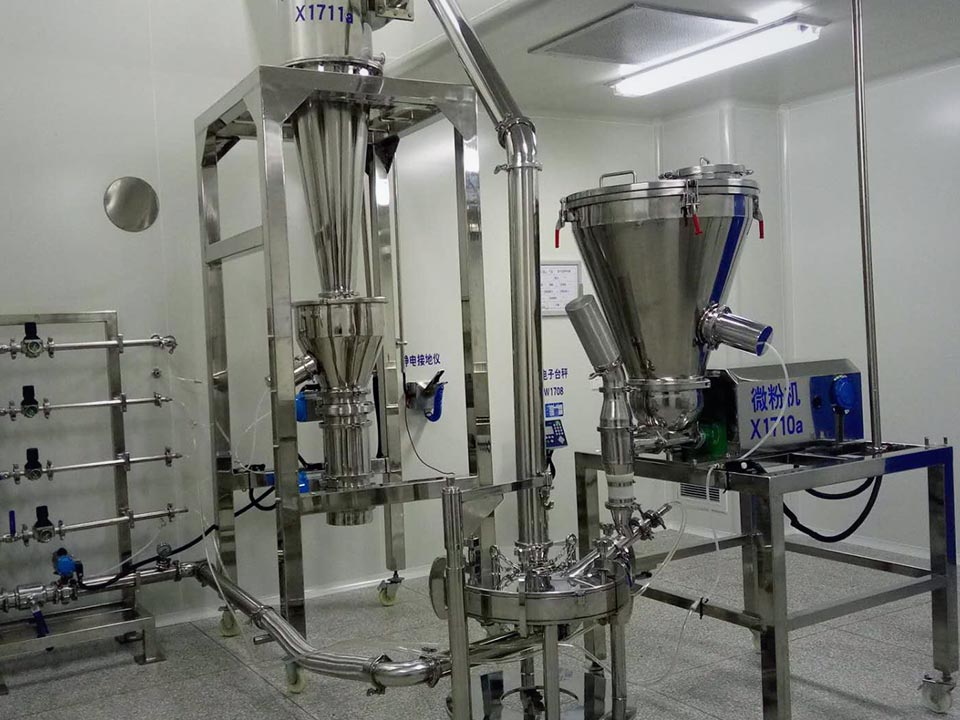
1. The feeding speed is too fast and the load increases, causing blockage. During the feeding process, you should always pay attention to the large deflection angle of the ammeter pointer. If it exceeds the rated current, it indicates that the motor is overloaded, and the motor will be burnt if overloaded for a long time. In this case, the feed door should be reduced or closed immediately, or the feeding method can be changed, and the feed amount can be controlled by increasing the feeder. There are two types of feeders: manual and automatic. The user should choose the appropriate feeder according to the actual situation. Due to the high speed of the grinder, the large load, and the strong fluctuation of the load. Therefore, the current when the grinder is working is generally controlled at about 85% of the rated current.
2. The discharging pipeline is not smooth or blocked and the feed is too fast, which will block the tuyere of the grinder; improper matching with the conveying equipment will cause the discharging pipeline to weaken or become blocked after no wind. After the fault is detected, the unmatched conveying equipment should be cleared first, and the feeding amount should be adjusted to make the equipment operate normally.
3. The broken or aging of the hammer, the closed or broken screen mesh, and the high water content of the ground material will cause the grinder to be blocked. The broken and severely aged hammers should be updated regularly, the grinder should be kept in good working condition, and the screen should be checked regularly. The water content of the ground material should be less than 14%, which can improve production efficiency, prevent the grinder from clogging, and enhance the reliability of the grinder.
These are the ways to deal with the clogging of the grinder. It is very common for the machine to malfunction. The most important thing is that we must know the way to solve the problem. This is a factor that makes the grinder longer service life. In addition, maintaining the machine is also very important.
Common problems of ball mills and solutions to failures
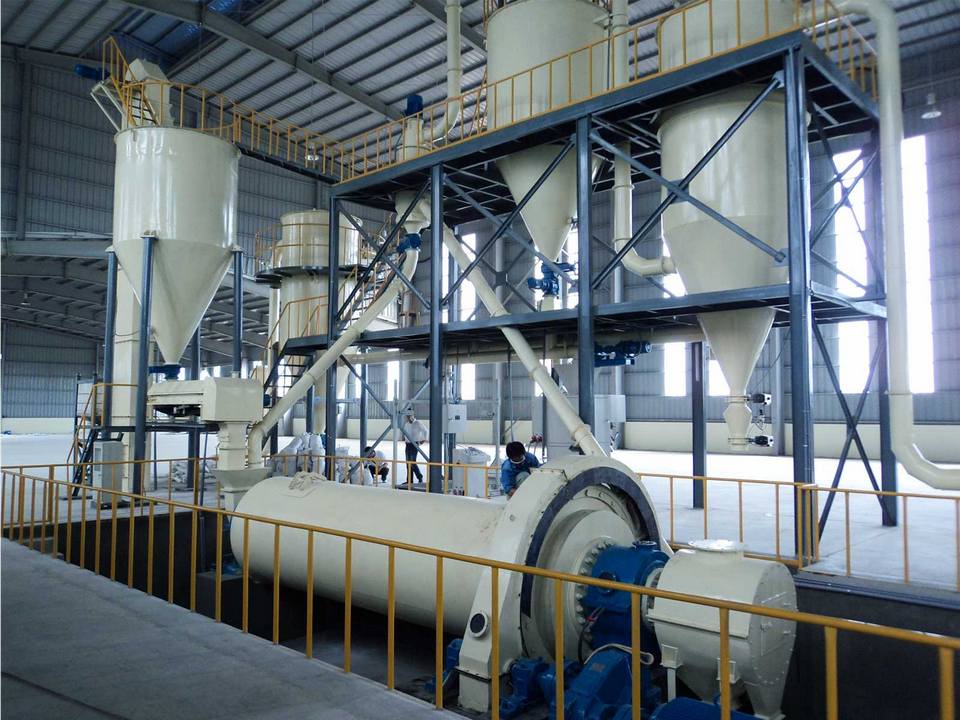
1. When the ball mill is running, there is a regular percussive sound, and the sound is loud. When the ball mill rotates, the liner hits the grinding cylinder of the ball mill. Judge the position of the liner of the ball mill according to the sound, find out the loose bolts and tighten them separately.
2. The temperature of the bearings of the ball mill and the motor has risen, exceeding the requirements. Try to feel the bearing by hand. If the temperature is too high, check and handle the ball mill from the following points.
(1) Check the lubrication points of each part of the ball mill, and check whether the brand of lubricating oil used is consistent with the factory instructions.
(2) Check whether the lubricating oil and grease of the ball mill have deteriorated.
(3) Check whether the lubrication pipeline of the ball mill is blocked, or the lubricating oil does not directly enter the lubrication point, and the insufficient amount of oil causes heat.
(4) The side clearance of the bearing bush of the ball mill is too small, the clearance between the bearing bush and the shaft is too large, and there are too many contact points, forming a uniform oil film on the bearing bush.
(5) Too much or too little grease in the rolling bearing of the ball mill will form rolling elements. Stirring the grease will generate heat, and the heat is not easy to disperse. If the lubrication is too little or poor, add enough oil according to the regulations, generally 1/3 ~ 1/2 of the bearing clearance.
(6) The sealing device of the hollow shaft at both ends of the ball mill body is too tight, or the iron part of the sealing body is in direct contact with the shaft.
The above problems should be dealt with in an appropriate way. Only when the side clearance of the bearing bush is too small or the bottom contact angle is too big, an oil jack must be used to lift the grinding cylinder, and the bearing bush should be drawn out from one side of the shaft and scraped separately.
3. The bearing of the reducer of the ball mill is overheated: In addition to checking the temperature rise of the bearing of the ball mill, check whether the vent of the reducer is blocked and clear the vent.
4. The ball mill motor produces vibration after starting, the main reasons are as follows:
(1) The gap between the two wheels of the ball mill coupling is too small to compensate for the displacement caused by the self-seeking core when the motor is started.
(2) The alignment method of the ball mill coupling is incorrect, which causes the two shafts to be misaligned.
(3) The coupling bolts of the ball mill are tightened asymmetrically, and the tightening force is different.
(4) The outer ring of the ball mill bearing moves.
Treatment method: Adjust the gap between the two wheels as required to make the two shafts concentric. Tighten the coupling bolts symmetrically with the same torque.
When the rotor is unbalanced, the ball mill rotor should be pulled out for static balance.
5. The ball mill reducer drives the ball mill to produce greater vibration
(1) The balance shaft of the ball mill and the reducer is not in a straight line
When the mill was installed with the liner, the secondary grouting was not carried out, or the anchor bolts were not tightened after the secondary grouting. Rotating the mill barrel with a hoist causes one end of the mill barrel to shift, and the two shafts are not in a straight line. The reducer drives the mill to cause vibration.
Treatment method: readjust so that the axis of the ball mill and the axis of the reducer are on the same plane axis.
(2) Large-scale ball mills are bulky and heavy, causing the foundation to sink and shift. Set up a settlement monitoring point next to the foundation, observe and adjust when the settlement is found.
6. Abnormal running sound of ball mill reducer:
The normal operation sound of the ball mill reducer should be uniform and stable. If there is a slight knocking sound or hoarse friction sound on the gear, there is no obvious change during operation, you can continue to observe, find out the cause, and stop the ball mill for processing. If the sound becomes louder, stop the ball mill inspection immediately.
What are the irreplaceable functions of the jet mill
Jet mills are widely used in chemical, mineral, metallurgy, abrasives, ceramics, refractory materials, medicine, pesticides, food, health products, new materials and other industries. The reason why it is chosen as the factory production equipment is that the jet mill does have an irreplaceable role.
The working principle of the jet mill: Qualified fine powder is brought into the turbo classifier on the upper part of the fluidized bed by the updraft, and the qualified materials are classified by the jet mill and enter the cyclone collector. A vertical turbine classifier). The finer tailings are brought into the bag filter by the airflow, and after being filtered by the bag filter, the tailings enter the discharge port at the lower part of the filter, and the pure air is evacuated.
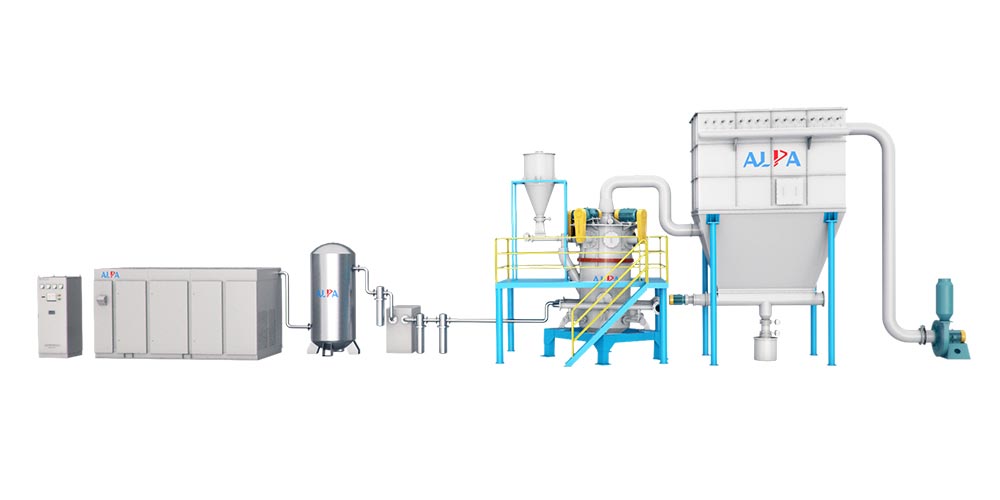
The main components of the machine: standard vertical turbine classifier, grinding and classifying are coordinated and completed simultaneously. The speed of the powder concentrator can be adjusted by frequency conversion, and the fineness of the product can be adjusted arbitrarily. For example, if a processing process requires products with multiple particle sizes, you can add two to four more than one classifier as the standard, so that the machine becomes a two-machine five-machine for grinding and classification.
Scope of application: The grinding mechanism of the jet mill determines its wide application range, with high fineness and high purity of the finished product. Typical materials include superhard diamond, silicon carbide, metal powder, ceramic pigments, medicine, biochemistry, etc. By changing the ordinary air in the gas source into inert gases such as nitrogen and carbon dioxide, the machine can be used as an inert gas protection device, suitable for the grinding and classification of flammable, explosive, and oxidizing materials.
Application of jet mill:
- High hardness materials: silicon carbide, various corundum, boron carbide, alumina, zirconia, garnet, zircon sand, diamond, etc.
- Non-metallic minerals: timing, graphite, kaolin, calcium carbonate, mica, barite, mullite, medical stone, wollastonite, talc, pyrophyllite, etc.
- Chemical industry: aluminum hydroxide, silica gel, various dyes, epoxy resins, various additives, etc.
- Food and medicine: pollen, hawthorn, pearl powder, Ganoderma lucidum, various vegetable powder, various Chinese herbal medicine, various health products, cosmetics, antibiotics, etc.
- Metal materials: aluminum powder, magnesium powder, zinc powder, tin powder, copper powder, etc.
- Other materials: ceramic materials, refractory materials, electronic materials, magnetic materials, rare earth materials, phosphors, copy material powders, etc.
Features of air classifier:
- Large output, low energy consumption and high classification efficiency.
- Concentrated particle size: This machine uses the original vertical impeller for classification. The stable classification technology and special sealing measures effectively prevent the leakage of particles, so that the product has no large particles, the particle size is concentrated, and the classification accuracy is high.
- Reasonable structure: products with 1-6 granularities can be produced at the same time according to user requirements.
- Strong applicability: It can be combined with various mills (jet mill, mechanical mill, ball mill, Raymond mill, vibration mill, etc.) to form a closed-circuit or open-circuit joint operation.
- High degree of automation.
Preparation and inspection of the superfine grinder before use
Jet mills use high-speed airflow to perform ultra-fine grinding of materials. At present, there are five types in the industry, which can be divided into horizontal disc (flat) jet mills, circulating tube jet mills, target jet mills, reverse jet mills and fluidized bed jet mill. The ultra-fine grinder uses air separation, heavy pressure grinding, and shearing to achieve ultra-fine grinding of dry materials. It is composed of cylindrical grinding chamber, grinding wheel, grinding rail, fan, material collection system and so on.
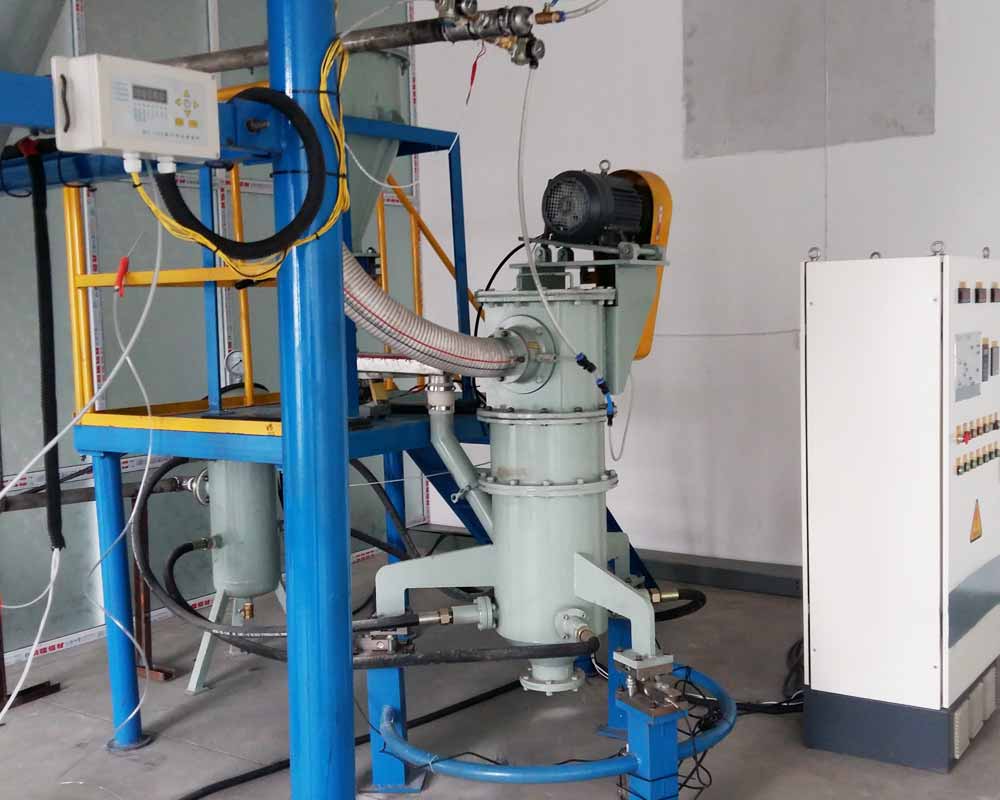
The inspection items before preparation and use are as follows:
1. Check the grinder and grading system to check whether there are metal objects and debris in the grinding room;
2. Check whether there are metal objects and sundries in the feeding hopper and feeding screw of the superfine grinder;
3. Check whether the ultra-fine grinder tightens the fasteners;
4. Whether the elasticity of the transmission belt of the ultra-fine grinder is moderate, and whether the protective cover has been installed;
5. Check the collision of the transmission parts, if there is any abnormality, analyze the reason and eliminate it in time;
6. Turn the transmission parts to see if there is any abnormality, then move the parts to check whether the operation direction is correct;
7. Run the ultra-micro grinding machine without load for 20-30 minutes, and observe the working current, temperature and vibration: the temperature rise of the spindle bearing should not exceed 35℃, and the highest target temperature should not exceed 70℃ (in different environments, the temperature is generally not more than 40 ℃); The vibration amplitude of machinery and equipment should not be too large. It can be put into production after normal no-load operation;
8. The superfine grinding machine should properly open the upper and lower air doors of the gravity dust collector room.
The application of ultra-fine grinding machine in the pharmaceutical industry
The medical ultra-fine grinder used in the development of medical resources can produce micron-level powder, which can destroy the structure of the tissue cell wall and obtain the required material characteristics.
The medical ultra-micro grinder uses compressed air to be cooled, filtered, and dried. The nozzle forms a supersonic airflow and is injected into the crushing cavity. The material is fluidized under the action of pressure difference. The accelerated material is at the intersection of multiple nozzles. Converge, produce fierce impact, collision, friction, and shear to achieve ultra-fine grinding of particles, which can be used to produce various micron-level powders. The medical ultra-fine grinder is used for ultra-fine pulverization and wall-breaking processing of various types of medicine; improvement of drug solubility; ingenious confusion and evacuation of compound drugs; manufacture of film ointment, etc.

The scope of use is:
Chinese herbal medicine: Typical materials include American ginseng, ginseng, Ganoderma lucidum, pearls and other valuable materials and pollen, hawthorn, shiitake mushrooms, pearl powder, gallnut, multiflorum multiflorum, Andrographis paniculata, mint, houttuynia cordata, fern root, kudzu root, dry alum, yam, white peony root , Lotus leaf, white tuckahoe, Tianqi, Angelica dahurica, honeysuckle, cordyceps, saffron, cuttlefish, fumarole, Radix isatidis, etc.
Western medicine: Typical materials include stomach medicine, nimodipine, antibiotic medicine, contrast medicine, etc.
- The medical ultra-fine grinderis small in size, light in weight and easy to operate.
- The medical ultra-fine grinderhas low vibration and impact and low noise.
- The medical ultra-fine grinderhas high frequency, large amplitude and high efficiency. The discharging granularity is fine and the distribution is even.
- The medical ultra-fine grinderis equipped with unique feeding and discharging ports, which is convenient for dust-free collection.
- Intermittent sealed grinding of pharmaceutical ultra-fine grinder may also be continuous open-circuit grinding.
- The medical ultra-fine grinderis easy to clean. The grinding drum can be removed and opened to facilitate cleaning and disinfection without leaving dirt.
- The grinding cylinder of the medical ultra-fine grinderis made of stainless steel. The ultra-fine grinderuses air separation, heavy pressure grinding, and shearing to achieve ultra-fine grinding of dry materials. It is composed of cylindrical crushing chamber, grinding wheel, grinding rail, fan, material collection system and so on. The jet mill uses high-speed airflow to superfinely grind materials to ensure no wear and pollution.
Selection of medical crusher equipment:
According to the physical characteristics of medicine, two kinds of equipment are used for grinding processing. For sugar-free and oil-free products, the grading impact mill (effectively reducing the energy consumption of production equipment) can achieve the grinding effect; for sugar-containing and oily products, use a fluidized-bed jet mill (low crushing temperature) , Oiliness and sugar will not melt during ultra-fine grinding, resulting in adhesion of equipment) for grinding processing.
Application of Talc in Plastic Modification
As an additive, modifier or filler, talc has been widely used in papermaking, paint, coatings, ceramics, daily chemicals, plastics, food, medicine and other industries. Talc has the advantages of soft texture, low abrasion, high gloss, low oil absorption, and good transparency.
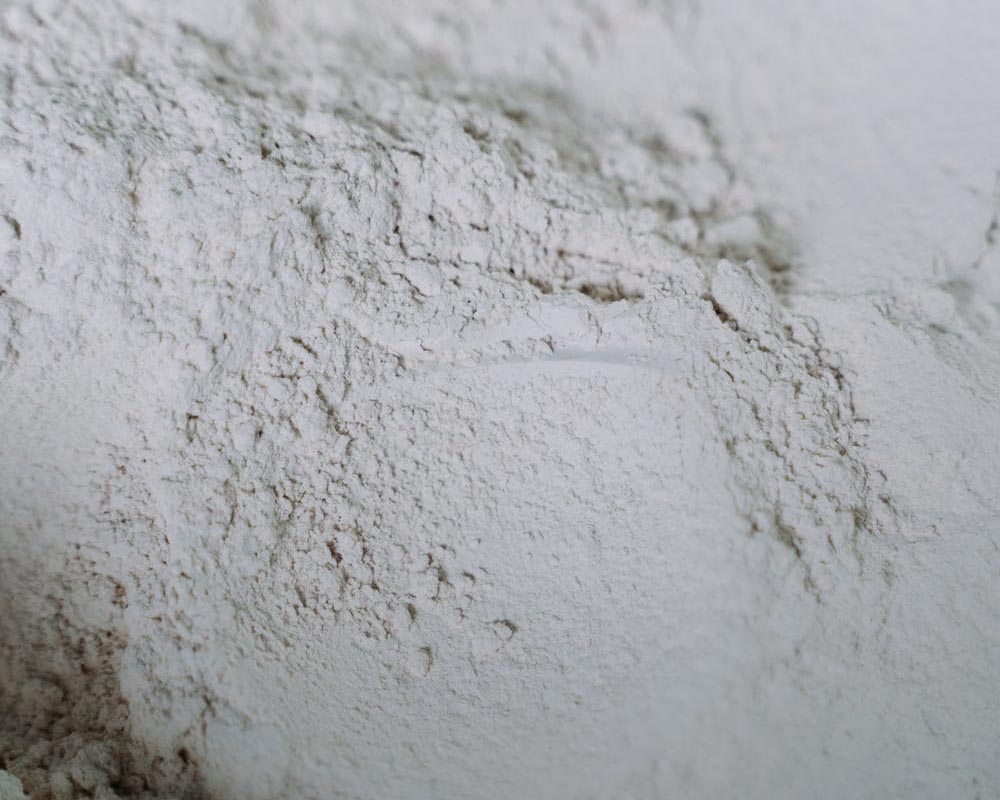
Four properties of talcum powder
- Enhance
The significant enhancement effect of talc on plastic products mainly comes from its unique microscopic flake structure. The more complete the flake structure of the processed talc powder is, the more obvious the enhancement effect will be. A larger diameter-to-thickness ratio (the ratio of the average diameter of the flake particles to their thickness) can improve the rigidity, impact strength, flexural modulus and thermal stability of plastic products.
- Insulation, barrier
Insulates and blocks high-quality ultra-fine talcum powder into a flake structure. When used in plastic products, it can be uniformly dispersed in the resin in a layered form. Just like the metal structural net embedded in cement products, in addition to maintaining the advantages of plastic, it also has obvious heat preservation and barrier effects.
- Nucleation
The slippery feeling of talc is very obvious, the opening of the plastic added with talc is obviously improved, and the anti-blocking property of the film can also be improved. When ultra-fine talcum powder (below 1μm) is uniformly dispersed in the plastic matrix, it can act as a nucleating agent.
- Anti-aging
Talc, mica, kaolin and other silicon-containing minerals have infrared and ultraviolet barrier properties, and have obvious effects of heat preservation and aging resistance in plastic products.
Reasons for choosing talcum powder
- Structure
Since the crystalline structure of talc is layered, it has a tendency to split into scales and special lubricity. When used in plastic products, it can be uniformly dispersed in the resin in a layered manner, and has good compatibility with the resin. The complementarity of properties and mechanical properties can improve the physical properties of plastic products.
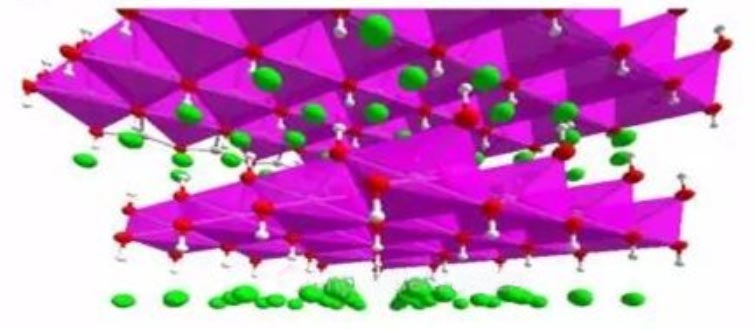
- Silica content
The silicon content in talc powder is an important indicator to measure the grade of talc powder. The higher the silicon content in talc powder, the higher the purity of talc, the better the application effect and the higher the price. Customers need to choose talcum powder according to the performance requirements of different plastic products.
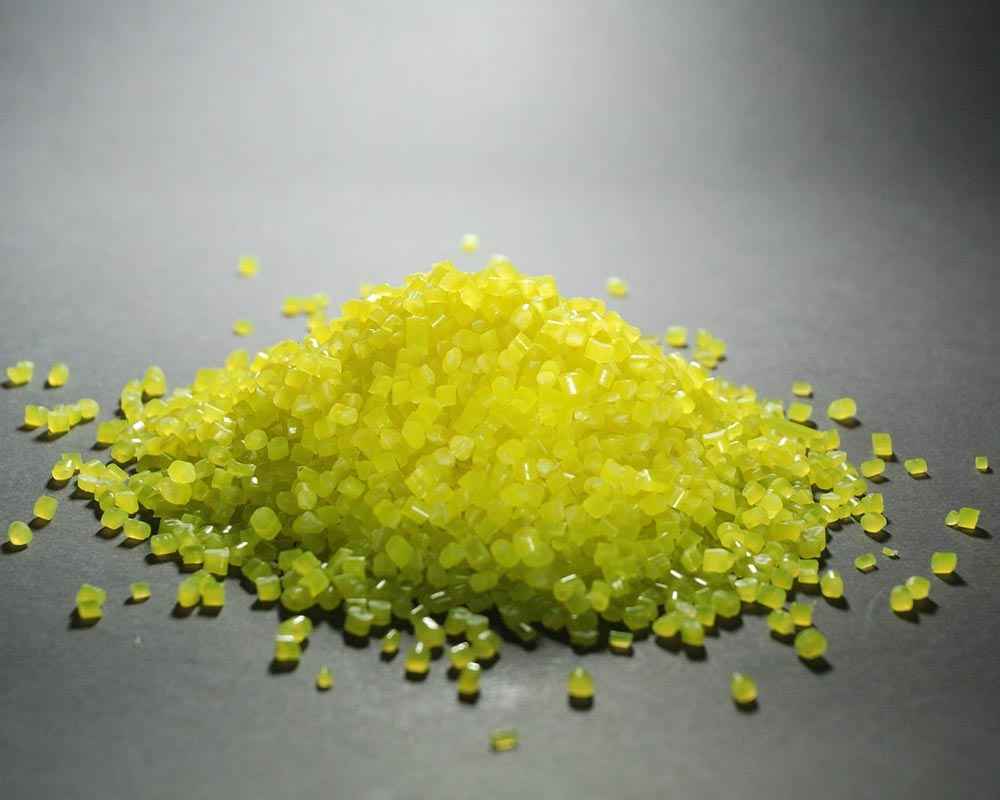
- Colour
The color of raw talc powder can be white, gray, light red, pink, light blue, light green and other colors, and has different degrees of solid luster. This color can improve the appearance and visual effect of the product.
- Surface properties
The larger specific surface area and appearance structure of talc powder will not only affect the amount of additives, but also promote the bonding force between the resin structures, thereby improving the physical properties of plastic products.
The influence of talcum powder on plastic properties
- Improve the molding shrinkage rate of plastic products
As the content of talc powder increases, the shrinkage rate of polypropylene plastics gradually decreases. The addition of talc powder increases its viscosity and decreases creep properties, thus reducing the crystallinity of the plastic; talc powder itself has no shrinkage, thus Reduce the overall material molding shrinkage.
- Surface hardness and surface scratch resistance
Surface hardness and surface scratch resistance are requirements for certain plastic products. Adding talc to polyethylene and polypropylene plastics can effectively improve the surface hardness and surface scratch resistance of products.
- Flexural modulus
The addition of white talc with flake structure to any kind of plastic can significantly increase its flexural modulus. For general mineral filling, this is the most significant feature of talc.
- Tensile Strength
The content of talc powder within a certain range can increase the tensile strength. After adding 1500 mesh activated talc to polypropylene, the tensile strength of the material changes. When the content of talc powder is less than 20%, the tensile strength of the material increases slightly. When the content of talc powder is above 20%, the tensile strength of the material gradually decreases as the content increases. The main reason is that the talc powder further increases, which weakens the polypropylene. Caused by the intermolecular gravitation.
- Impact strength
The effect of talc on the impact strength of plastic materials is similar to the effect of talc on the tensile strength of plastic materials. When the content of various mineral additives is less than 10%, they all have an effect on improving the impact toughness. When the content is greater than 10%, the impact performance begins to decrease.
- Deformation temperature
Talc has a significant effect on the thermal deformation temperature of plastic materials, and can effectively increase the thermal deformation temperature of various plastics, thereby increasing the heat resistance of plastics.
Application of talcum powder in modified plastics
- Polypropylene resin (PP)
After polypropylene resin is added to talc, the rigidity is improved, the surface hardness is improved, the heat creep resistance is improved, the electrical insulation is improved, and the dimensional stability is improved.
Polypropylene change with 40% superfine talcum powder masterbatch
| Category | Variety |
| Flexural modulus | 16100kg/cm2 increased to 42000kg/cm2 |
| Heat change temperature | 62℃(1.82Mpa force) increased to 88℃ |
- Polyethylene resin (PE)
After polyethylene resin is added to talc, the toughness is improved, the heat change temperature is improved, the flexural strength is improved, the creep tendency is reduced, the mechanical strength is improved, the surface hardness is improved, and the smoothness is improved.
- ABS resin (acrylonitrile-butadiene-styrene copolymer)
In order to improve the existing performance of ABS, the car instrument board blister sheet made by blending ABS and PVC, and the cover skin of imitation leather luggage made by blending ABS and PVC are high in strength and toughness. This blended material is filled with ultrafine talcum powder, which has the advantages of improving notched impact strength and reducing cost.
- Polystyrene resin (PS)
Polystyrene resin has shortcomings such as high brittleness and sensitivity to environmental stress cracking. After adding talc, it can adjust rheological properties, improve impact toughness, increase perturbation modulus, and increase tensile yield strength.
For example: adding 40% superfine talc powder or talc powder masterbatch, the perturbation modulus increases from 23800kg/cm2 to 58800kg/cm2, and the tensile strength increases from 336kg/cm2 to 385kg/cm2.
- Polyvinyl chloride resin (PVC)
The average particle size is 5 microns or 2000 mesh talc. After adding to 40-45% volume, the yield strength is even higher than the original breaking strength, which has a significant enhancement effect on the PVC system; the unnotched impact strength is 15% by weight There is basically no reduction in the weight, and the notched impact strength is reduced; it can significantly increase the flexural modulus.
Comparison of the influence of talcum powder and calcium carbonate on plastic modification
- Shape
The shape of talcum powder is flake, so it has higher rigidity, and at the same time, it has dimensional stability and heat resistance temperature, and it has a good reinforcement effect. Calcium carbonate is generally granular, so its stiffness and other aspects are not as good as talc.
- Nucleation
Talc has a nucleating effect on polypropylene, while calcium carbonate has no obvious effect in this respect.
Comparison of the influence of calcium carbonate and talc on plastic modification
| Content | Tensile Strength | Bending strength | Flexural modulus | Model shrinkage |
| 20% calcium carbonate | 27.8Mpa | 40Mpa | 2000Mpa | 0.87 |
| 20% talcum powder | 29Mpa | 42Mpa | 1300Mpa | 0.82 |
How to use talcum powder
- Direct powder addition method
The talc powder is directly mixed with the plastic raw material and then extruded and pelletized by the twin-screw extruder to become the modified plastic raw material. This is a common method and the most economical method.
- Carrier-free masterbatch method
The talcum powder is made into a kind of loose particles without a carrier through a special process, and then the particles are mixed with plastic raw materials, and granulated into modified plastic raw materials by a twin-screw extruder.
- Filling masterbatch method
The talc powder and the plastic carrier are mixed and granulated by an extruder to form a high-content masterbatch. This masterbatch can be directly mixed with plastic raw materials, and the finished product can be processed by extrusion and injection.
Precautions for the use of talcum powder
The surface activation treatment of talc powder is necessary, and the surface activation treatment of talc powder is mainly to improve the compatibility between talc powder and plastic raw materials and increase the modification effect. Different surface treatment agents should be selected for different plastics.
The dispersibility of talc powder in plastic raw materials, under the same formula, the dispersibility of talc powder in plastic raw materials has a great influence on the final physical and chemical properties of the modified material. The production process should be strictly controlled. The main factors affecting the dispersion of talc in plastic raw materials are formula, temperature, output, and process. In addition, when the amount of talc powder added is large, a stepwise addition method can be used to achieve a good dispersion effect.
Talc is a non-metallic mineral with a very wide range of applications. With the continuous improvement of social technology development, the application of talc is facing more opportunities and challenges. The application demand for talc powder in various industries is increasing, and the market for talc has an immeasurable prospect.
Article source: China Powder Network
Three major processes of jet mill that must be mastered
As an important pulverizer, the operation process of the jet mill must be mastered first. Only when you understand the safe operation rules can you perform correct operation.
-
Preparation before starting
(1) After receiving the production instruction, prepare the materials in advance.
(2) Inspect the pipes, fastening bolts, gaskets, spindle bearings and instrument panels to see if they are intact, and if everything is normal and flexible.
(3) Sort out the scene to eliminate debris.
(4) Whether there are material deposits in the casing and separation equipment, and if so, eliminate the deposits.
(5) Inspect the transportation pipeline and its auxiliary equipment to see if there is any blockage, air leakage or poor sealing in the pipeline, whether the auxiliary equipment is intact, and whether it can work normally.
(6) Whether the lubrication of the rolling bearing is good and timely.
-
Start the jet mill
(1) Start the jet mill first, control the start current and time, so that the equipment can start to run. When the equipment is running normally, start feeding, and the feeding amount can be adjusted appropriately according to the characteristics of the material.
(2) The material should be fed evenly and continuously, and it should not be large or small, which will harm the separation effect of the jet mill and easily cause the equipment to malfunction.
(3) In the operation process, once an abnormality is found, it should be stopped immediately for inspection, and the operation can only be continued after the fault is eliminated.
-
Shutdown and inspection of jet mill
(1) Stop feeding until the materials in the shredder casing are all ground and separated, then turn off the motor. Let the equipment run idle for another 3 minutes, and then press and hold the stop button to stop the equipment.
2) After the equipment stops, open the inspection door to check the wear condition of the wearing parts.
(3) Fill in the corresponding production records and upgrade the equipment status markings for the next drive.
Ultra-fine grinding of non-metallic minerals
Non-metallic mines, metal mines, and fuel mines are called the three pillars of the materials industry. The use of non-metallic minerals depends on the degree of deep processing, including ultra-fine grinding, ultra-fine grade, fine purification and surface modification, among which effective ultra-fine grinding is the prerequisite and guarantee for various deep processing. The ideal ultra-fine powder should have the characteristics: particles as small as possible, no agglomeration, narrow particle size distribution, spherical particles as much as possible, uniform chemical composition, etc.
Due to the wide variety of non-metallic minerals, various requirements are put forward on the particle size distribution and purity of crushed products according to their different uses. The development of ultra-fine grinding technology must adapt to its specific requirements. Generally speaking, the requirements for non-metallic minerals are as follows:
- Fineness
The application of non-metallic mineral products requires a certain degree. For example, kaolin and heavy calcium carbonate as papermaking raw materials require a product fineness of -2μm accounting for 90%, whiteness >90%; high-grade paint filler heavy calcium carbonate powder fineness of 1250 Mesh; zirconium silicate as a ceramic opacifier requires an average fineness of 0.5~1μm; wollastonite as a filler also requires its fineness to be less than 10μm and so on.
- Purity
The purity requirement of non-metallic mineral products is also one of its main indicators, which means that no pollution should be allowed during the grinding process, and the original composition should be maintained. If it is white minerals, a certain degree of whiteness is required. For example, the whiteness of calcined kaolin and talc used in papermaking is required to be ≥90%, and the whiteness of heavy calcium carbonate used in papermaking coatings, fillers and high-grade paint fillers is greater than 90%. Wait.
- Powder shape
Some non-metallic mineral products have strict requirements on their shapes to meet different needs. For example, wollastonite used for composite reinforcement, its ultrafine powder is required to maintain its original needle-like crystal state as much as possible, so that wollastonite products become natural short fiber reinforced materials, and its aspect ratio is required to be >8~10.
The application fields of ultra-fine powder materials account for 40.3% in the mechanical field, 34.6% in the thermal field, 12.9% in the electromagnetic field, 8.9% in the biomedical field, 2.4% in the optical field, and 0.9% in other fields.
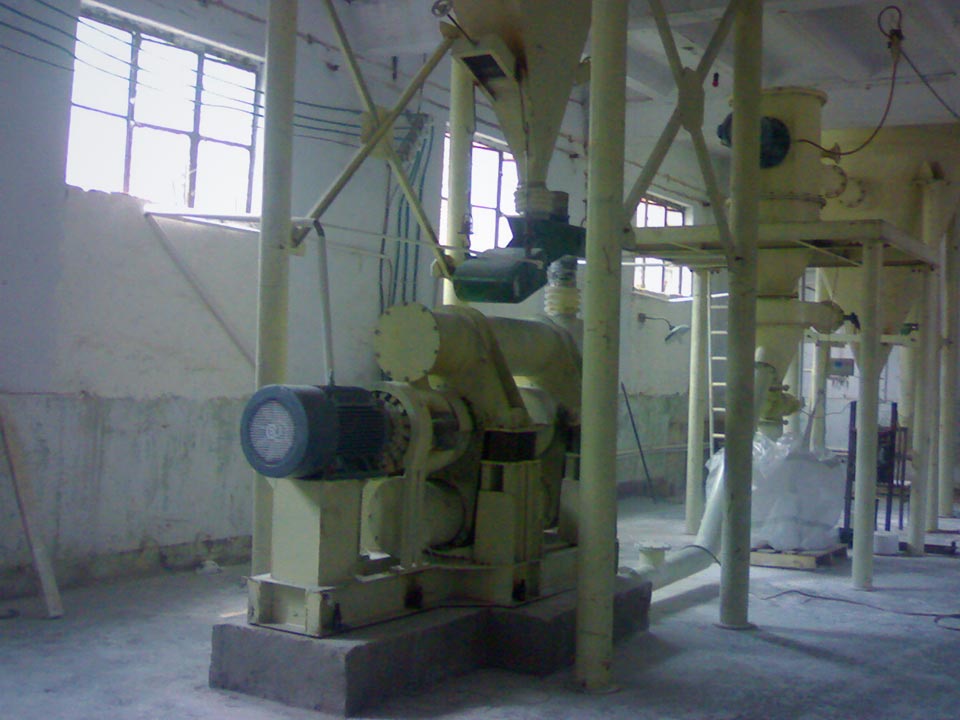
Non-metallic mineral ultra-fine grinding method
Crushing is different from the destruction of a single material. It refers to the effect on the group, that is, the crushed material is a group of particles with different sizes and shapes.
There are two main methods for preparing ultrafine powder from the principle of preparation: one is chemical synthesis; the other is physical grinding. Chemical synthesis is through chemical reaction or phase transformation, the powder is prepared from ions, atoms, and molecules through crystal nucleus formation and crystal growth. Due to the complex production process, high cost, and low yield, the application is limited. The principle of physical grinding is to grind materials through the action of mechanical force. Compared with chemical synthesis methods, physical grinding has lower cost, relatively simple process, and large output.
Advantages of mechanical grinding method: large output, low cost, simple process, etc., and mechanochemical effects are generated during the grinding process to increase the activity of the powder; disadvantages: the purity, fineness and morphology of the product are not as good as the ultra-fine powder prepared by chemical method body. This method is suitable for large-scale industrial production, such as deep processing of mineral products.
Non-metallic mineral ultra-fine grinding equipment
At present, the main method for preparing ultra-fine powder materials is physical grinding. Therefore, ultra-fine grinding equipment mainly refers to various grinding-related equipment that mainly produces ultra-fine powder by mechanical methods. Commonly used ultrafine grinding equipment includes jet mill, mechanical impact mill, vibration mill, stirring mill, colloid mill and ball mill.
| Equipment type | Feeding size/mm | Product fineness d97/μm | Grinding principle |
| Jet mill | <2 | 3~45 | Impact, collision |
| Mechanical impact grinding | <10 | 8~45 | Blow, impact, shear |
| Rotary mill | <30 | 10~45 | Impact, collision, shear, friction |
| Vibration mill | <5 | 2~74 | Friction, collision, shear |
| Stirring mill | <1 | 2~45 | Friction, collision, shear |
| Drum Ball Mill | <5 | 5~74 | Friction, impact |
| Planetary ball mill | <5 | 5~74 | Friction, impact |
| Grinding and peeling machine | <0.2 | 2~20 | Friction, collision, shear |
| Sand mill | <0.2 | 1~20 | Friction, collision, shear |
| Roller mill | <30 | 10~45 | Squeeze, friction |
| High pressure homogenizer | <0.03 | 1~10 | Cavitation, turbulence, shear |
| Colloid mill | <0.2 | 2~20 | Friction, shear |
- High-speed mechanical impact mill
High-speed mechanical impact crusher refers to the use of rotating bodies (rods, hammers, blades, etc.) rotating at a high speed around a horizontal or vertical axis to apply a violent impact on the feedstock, causing it to collide with the fixed body or particles, thereby making An ultra-fine grinding equipment for particle grinding.
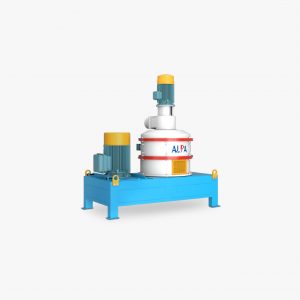
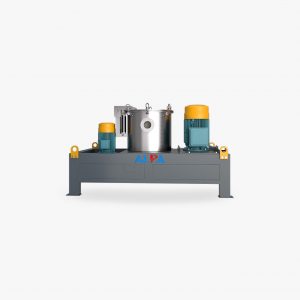
Advantages: large crushing ratio, adjustable fine powder particle size, simple structure, easy operation, less supporting equipment, compact installation, less floor space, large capacity, and high efficiency.
Disadvantages: high-speed operation makes overheating and component wear unavoidable.
It is suitable for the production of superfine powder of medium hardness materials such as calcite, marble, chalk and talc.
- Jet mill
Jet mill is also called jet mill or energy flow mill. It uses the energy of high-speed airflow (300-500m/s) or superheated steam (300-400℃) to cause particles to collide, collide and rub each other, thereby causing solid materials to grind. Mainly include: flat jet mill, circulating jet mill, opposite jet jet mill, rake jet mill, fluidized bed jet mill, etc.
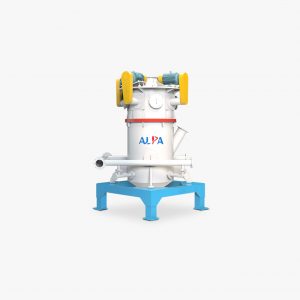
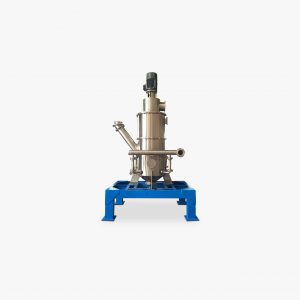
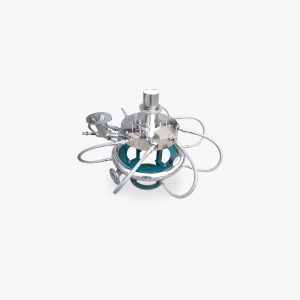
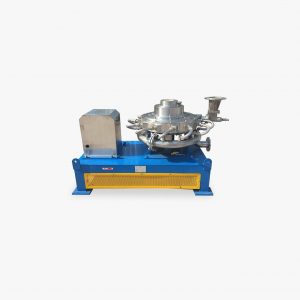
The jet mill pulverization ratio is generally 1-40, and the product fineness d can generally reach 3-10μm. The product is less contaminated and can be operated in a sterile state. It is suitable for pulverizing low-melting and heat-sensitive materials and biologically active products. The production process is continuous, the production capacity is large, and the degree of self-control and automation is high.
Disadvantages: Jet mill is currently the most researched ultrafine grinding equipment with the most complete models and relatively mature technology. It also has the following shortcomings: large-scale, specialized production of high purity, high fineness products, high cost, high energy consumption, The machining accuracy is difficult to reach sub-micron products, and the material is worn out. Jet mills are widely used for ultrafine grinding of non-metallic minerals, chemical raw materials, health foods, rare earths, etc., such as talc, marble, kaolin, and other non-metallic minerals below medium hardness.
Vibration mill is an ultra-fine grinding equipment with a ball or rod as the medium. The processed product can be as fine as a few microns. It is widely used in building materials, metallurgy, chemical industry, ceramics, glass, refractory materials and non-metallic minerals and other industries. Powder processing.
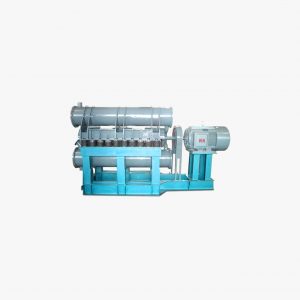
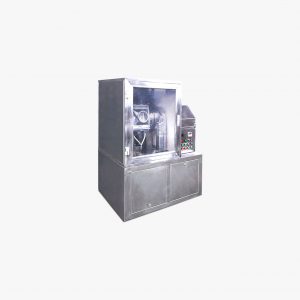
Advantages of vibration mill: compact structure, small size, small quality, simple operation, convenient maintenance, low energy consumption, high output, uniform product size, disadvantages: large noise, large-size vibration mill has high technical requirements for springs, bearings and other machine parts .
The development trend of ultra-fine grinding equipment
(1) Improve product fineness and reduce equipment grinding limit;
(2) Increase the output of a single machine and reduce the energy consumption per unit of product;
(3) Reduce abrasion;
(4) High stability and reliability;
(5) Online control of product fineness and particle size distribution;
(6) Efficient, fine and large grading equipment;
(7) Ultra-fine grinding equipment for special grain and tough materials.
Article source: China Powder Network
Ternary material grinding process and equipment
The ternary material is a secondary sphere formed by agglomeration of single crystals of about 1μm, and the particle size of the secondary sphere is 3-40μm. The mixture of the ternary material precursor and the lithium source is calcined at a high temperature in a sagger, and there is a burning loss rate of more than 24%, so the material is severely compacted, and it is necessary to use a crushing device to break a few centimeters of large materials into a few millimeters. Small pieces, and then use grinding equipment to grind small pieces of a few millimeters into the final product.
One of the important quality indicators of ternary materials is particle size and particle size distribution. Particle size and particle size distribution will affect the specific surface area, tap density, compaction density, processing performance and point chemical properties of the ternary material. Therefore, the particle size and particle size distribution of ternary materials for lithium-ion batteries must be strictly controlled.
The feed size and product size of different crushing equipment are different, and the compacted ternary materials need to be crushed step by step according to the specific conditions of the equipment. The following table is a comparison of the four commonly used equipment of ternary materials.
Comparison table of commonly used crushing equipment for ternary materials
| Grinding equipment | Feeding size/mm | Product size/μm | Common power/kW | Capacity corresponding to power/(kg/h) |
| Jaw crusher | 300~1000 | 2000~20000 | 1.5 | 450 |
| Roller crusher | <200 | 1000~20000 | 2.2 | 500 |
| Jet mill | <3 | 1~50 | 60(including compressed air) | 300 |
| Impact mill | <10 | 1~15 | 12 | 100 |
According to the performance comparison of the four types of equipment, the common grinding process for ternary materials can be designed: Jaw crusher → Roller crusher → Jet mill (Impact mill).
Common ternary material crushing process flow chart

Ternary material crushing equipment
According to the particle size of the crushed product, the crushing equipment can be divided into:
①Coarse crushing equipment, such as jaw crusher, roller crusher, hammer crusher, etc.;
②Fine crushing equipment, such as ball mill, rod mill, etc.;
③Ultra-fine grinding equipment, such as centrifugal mill, stirring mill, jet mill, sand mill and Raymond mill, etc.
According to whether the grinding medium is used or not, it can be divided into:
①There are media grinding equipment, such as ball mills and sand mills;
②Medium-free grinding equipment, such as jet mill, colloid mill, Raymond mill, etc.
Comparison of several common crushing equipment
| Crushing equipment | Crushing mechanism | Feeding size/mm | Product size/μm | Applications |
| Jaw Crusher | Pressure splitting | 300~1000 | 2000~20000 | Coarse and medium crushed hard materials |
| Roller crusher | Pressure | <40 | 1000~20000 | Medium and finely crushed hard and soft materials |
| Ball mill | Grinding, impact | <5 | 20~200 | Coarse and fine grinding of hard materials and corrosive materials |
| Jet mill | Impact, grinding | <2 | 1~30 | Finely grind soft and medium-hard materials |
- Jaw Crusher
The crushing method of the jaw crusher is a curved extrusion type. The motor drives the belt and pulley, and the movable jaw moves up and down through the eccentric shaft. The structure of jaw crusher mainly includes frame, eccentric shaft large pulley, flywheel, movable jaw, side guard, etc.
Advantages: large crushing ratio, uniform product size; simple structure, reliable work; large adjustment range of the material outlet. Disadvantages: There is an idling stroke, which increases non-productive power consumption; when crushing viscous and wet materials, the production capacity will be reduced, and even blockage will occur.
- Roller crusher
The roller crusher is driven by a motor to rotate the rollers according to the relative direction. When crushing the material, the material passes through the roller from the feed port and is crushed by rolling, and the crushed product is discharged from the bottom of the chassis.
Advantages: simple structure, compact and light, low cost, can crush sticky and wet materials. Disadvantages: low production capacity; can not crush large pieces of material, nor should it crush hard materials, it is usually used for medium and fine crushing of medium hard or soft materials.
- Jet mill
The jet mill uses high-speed airflow as the power and carrier, and the airflow bundle formed by compressed air is turned into velocity energy through the nozzle in the pulverizing chamber. The factors that affect the effect of jet milling include the initial particle size of the raw materials, the diameter of the nozzle, the speed of the classifying wheel, the working pressure, and the feed rate.
Jet mills mainly include: horizontal disc jet mills, 0-type circulating tube jet mills, counter-jet jet mills, target jet mills, fluidized bed jet mills and other types.
- Mechanical grinding machine
Low energy consumption: It integrates centrifugal grinding, impact grinding and extrusion grinding, which can save energy up to 40%~50% compared with other types of mechanical grinding machines.
High fineness: equipped with a self-split grading system, product fineness ≥2500 mesh.
Large feeding range: feeding particle size ≤10mm.
Low wear: The wear parts of the grinding and classification part are made of corundum ceramic material, which has a long service life.
Performance comparison of jet grinder and mechanical grinder
| Project | Principle | Structure | Energy consumption | Wear | Production capacity |
| Jet mill | Use compressed gas for power | Simple, with dedicated grinding cavity | High | High | High |
| Mechanical grinding machine
|
Use mechanical energy as power | Install the blade on the movable plate and the fixed plate | Low | Low | Average |
Article source: China Powder Network

